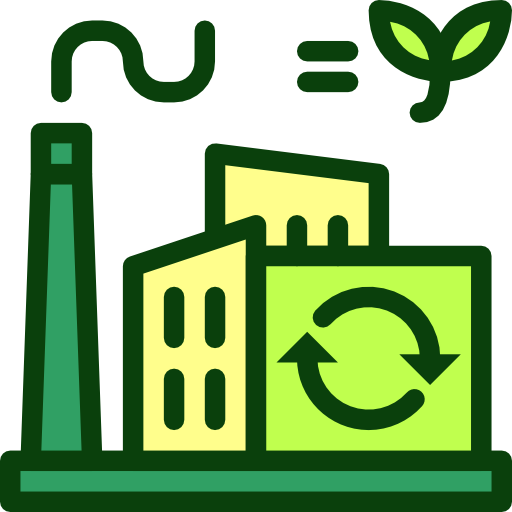Indonesia - Geography

Here, let us take a look at the Geography of Indonesia.
note 1: 13,466 islands are in the archipelago, of which 922 are permanently inhabited; Indonesia is the world's largest country composed solely of islands; the country straddles the equator and occupies a strategic location along major sea lanes from the Indian Ocean to the Pacific Ocean
note 2: Indonesia is one of the countries along the Ring of Fire, which is a belt bordering the Pacific Ocean that contains about 75% of the world's volcanoes, up to 90% of the world's earthquakes, and 80% of tsunamis
note 3: despite having the fourth largest population in the world, Indonesia is the most heavily forested region on earth after the Amazon
Geographical data of Indonesia
| Location | Southeastern Asia, archipelago between the Indian Ocean and the Pacific Ocean |
|---|---|
| Geographic coordinates | 5 00 S, 120 00 E |
| Map references | Southeast Asia |
| Tarrain | mostly coastal lowlands; larger islands have interior mountains |
| Natural Resources | petroleum, tin, natural gas, nickel, timber, bauxite, copper, fertile soils, coal, gold, silver |
| Natural Hazards | occasional floods; severe droughts; tsunamis; earthquakes; volcanoes; forest fires volcanism: Indonesia contains the most volcanoes of any country in the world, with over 75 historically active; significant volcanic activity occurs on Java, Sumatra, the Sunda Islands, Halmahera Island, Sulawesi Island, Sangihe Island, and in the Banda Sea; Merapi (2,968 m), Indonesia's most active volcano, has been deemed a Decade Volcano by the International Association of Volcanology and Chemistry of the Earth's Interior, worthy of study due to its explosive history and close proximity to human populations; in 2018, a large explosion and flank collapse destroyed most of the island of Anak Krakatau (Child of Krakatau) and generated a deadly tsunami that left more than 400 dead; other notable historically active volcanoes include Agung, Awu, Karangetang, Krakatau (Krakatoa), Makian, Raung, Sinabung, and Tambora; see note 2 under "Geography - note" |
| Irrigated Land | 67,220 sq km (2012) |
| Major rivers (by length in km) | Sepik (shared with Papua New Guinea [s]) - 1,126 km; Fly (shared with Papua New Guinea [s]) - 1,050 km note: [s] after country name indicates river source; [m] after country name indicates river mouth |
| Major aquifers | |
| Land Boundaries | 2,958 km |
| Border Countries | Malaysia 1,881 km; Papua New Guinea 824 km; Timor-Leste 253 km |
| Coastline | 54,716 km |
| Climate | tropical; hot, humid; more moderate in highlands |
| Area | |
| Total Area | |
| Land Area | 1,811,569 sq km |
| Water Area | 93,000 sq km |
| comparative Area | slightly less than three times the size of Texas |
| Maritime Claims | |
| Territorial sea | 12 nm |
| Exclusive economic zone | 200 nm |
| Elevations | |
| Highest point | Puncak Jaya 4,884 m |
| Lowest point | Indian/Pacific Oceans 0 m |
| Mean elevation | 367 m |
| Land Use | |
| Agricultural land | 29.1% (2023 est.) |
| Agricultural land: arable land | arable land: 9.4% (2023 est.) |
| Agricultural land: permanent crops | permanent crops: 13.9% (2023 est.) |
| Agricultural land: permanent pasture | permanent pasture: 5.8% (2023 est.) |
| Forest | 50.6% (2023 est.) |
| Other | 20.3% (2023 est.) |
Population Distribution
Major concentration on the island of Java, which is considered one of the most densely populated places on earth; of the outer islands, Sumatra contains some of the most significant clusters, particularly in the south near the Selat Sunda and along the northeastern coast near Medan; the cities of Makasar (Sulawesi), Banjarmasin (Kalimantan) are also heavily populated
People and Society
In Indonesia, the different Ethnic groups are such that we have: Javanese 40.1%, Sundanese 15.5%, Malay 3.7%, Batak 3.6%, Madurese 3%, Betawi 2.9%, Minangkabau 2.7%, Buginese 2.7%, Bantenese 2%, Banjarese 1.7%, Balinese 1.7%, Acehnese 1.4%, Dayak 1.4%, Sasak 1.3%, Chinese 1.2%, other 15% (2010 est.)
| Population | |
|---|---|
| Pop growth rate | 0.73% (2024 est.) |
| Birth rate | 14.8 births/1,000 population (2024 est.) |
| Death rate | 6.8 deaths/1,000 population (2024 est.) |
| Health expenditure | |
| Physicians Density | |
| Hospital bed Density | 1.4 beds/1,000 population (2021 est.) |
| Total fertility rate | 1.96 children born/woman (2024 est.) |
| Gross reproduction rate | 0.96 (2024 est.) |
| Contraceptive prevalence rate | |
| Est married women (ages 15-49) | 70% (2023 est.) |
| Literacy | |
| Education expenditures | |
| Net Migration rate | -0.7 migrant(s)/1,000 population (2024 est.) |
| Nationality | Indonesian | Indonesian(s) |
| Languages | |
| Religions | Muslim 87.4%, Protestant 7.5%, Roman Catholic 3.1%, Hindu 1.7%, other 0.8% (includes Buddhist and Confucian) (2022 est.) |
| Age Structure | |
| 0-14 years | 23.8% (male 34,247,218/female 32,701,367) |
| 15-64 years | 68.3% (male 96,268,201/female 95,961,293) |
| 65 years and over | 8% (2024 est.) (male 10,284,628/female 12,099,758) |
| Dependency Ratios | |
| Total dependency ratio | 46.5 (2024 est.) |
| Youth dependency ratio | 34.8 (2024 est.) |
| Elderly dependency ratio | 11.6 (2024 est.) |
| Potential support ratio | 8.6 (2024 est.) |
| Median Age | |
| Total | 31.5 years (2024 est.) |
| Male | 30.8 years |
| Female | 32.3 years |
| Urbanization | |
| Urban population | 58.6% of total population (2023) |
| Rate of urbanization | 1.99% annual rate of change (2020-25 est.) |
| Major urban areas (Pop) | 11.249 million JAKARTA (capital), 3.729 million Bekasi, 3.044 million Surabaya, 3.041 million Depok, 2.674 million Bandung, 2.514 million Tangerang (2023). |
| Sex Ratio | |
| At birth | 1.05 male(s)/female |
| 0-14 years | 1.05 male(s)/female |
| 15-64 years | 1 male(s)/female |
| 65 years and over | 0.85 male(s)/female |
| Total population | 1 male(s)/female (2024 est.) |
| Infant Motality | |
| Total | 18.9 deaths/1,000 live births (2024 est.) |
| Male | 21.3 deaths/1,000 live births |
| Female | 16.4 deaths/1,000 live births |
| Life Expectancy at birth | |
| Total population | 73.6 years (2024 est.) |
| Male | 71.3 years |
| Female | 76 years |
| Drinking Water Sources | |
| Improved: urban | urban: 98.3% of population (2022 est.) |
| Improved: rural | rural: 88.3% of population (2022 est.) |
| Improved: total | total: 94.1% of population (2022 est.) |
| Unimproved: urban | urban: 1.7% of population (2022 est.) |
| Unimproved: rural | rural: 11.7% of population (2022 est.) |
| Unimproved: total | total: 5.9% of population (2022 est.) |
| Sanitation facility acess | |
| Improved: urban | urban: 97.4% of population (2022 est.) |
| Improved: rural | rural: 91.1% of population (2022 est.) |
| Improved: total | total: 94.7% of population (2022 est.) |
| Unimproved: urban | urban: 2.6% of population (2022 est.) |
| Unimproved: rural | rural: 8.9% of population (2022 est.) |
| Unimproved: total | total: 5.3% of population (2022 est.) |
| Alcohol consumption per capita | |
| Total | 0.08 liters of pure alcohol (2019 est.) |
| Beer | 0.06 liters of pure alcohol (2019 est.) |
| Wine | 0.01 liters of pure alcohol (2019 est.) |
| Spirits | 0.02 liters of pure alcohol (2019 est.) |
| Other alcohols | 0 liters of pure alcohol (2019 est.) |
| Tobacco use | |
| Total | 39% (2025 est.) |
| Male | 74.9% (2025 est.) |
| Female | 3.1% (2025 est.) |
| Child marriage | |
| Women married by age 15 | 2% (2017) |
| Women married by age 18 | 16.3% (2017) |
Demographic profile
All Important Facts about Indonesia
Want to know more about Indonesia? Check all different factbooks for Indonesia below.









